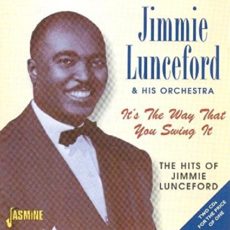
Daily Dose Of Jazz…
James Melvin Lunceford was born on June 6, 1902 on a 53 acre farm in the Evergreen community, west of the Tombigbee River, near Fulton, Mississippi. They moved seven months after his birth to his other’s hometown of Oklahoma City, Oklahoma and as a child he learned several instruments. By high school they were living in Denver, Colorado where he studied music under Wilberforce J. Whiteman, father of bandleader Paul Whiteman. He went on to continue his studies at Fisk University. By 1922, he was playing alto saxophone in a local band led by the violinist George Morrison which included Andy Kirk, another musician destined for fame as a bandleader.
In 1927 he organized a student band at Manassas High School in Memphis, Tennessee called the Chickasaw Syncopators, and later changed to the Jimmie Lunceford Orchestra. Under the new name, the band started its professional career in 1929 and made its first recordings in 1930. He gained recognition as the first public high school band director in Memphis. After a period of touring, the band accepted a booking at the Harlem nightclub The Cotton Club in 1934 for their revue ‘Cotton Club Parade’ starring Adelaide Hall. His orchestra, with their tight musicianship and the often outrageous humor in their music and lyrics, made an ideal band for the club, and his reputation began to steadily grow.
The band’s style of playing was based its ensemble work and for using a two-beat rhythm, called the Lunceford two-beat, as opposed to the standard four-beat rhythm, a distinction made possible by the imaginative arrangements by trumpeter Sy Oliver. Comedy and vaudeville also played a distinct part in Jimmie’s presentation incorporating costumes, skits and jabs at mainstream white bands.
Over the next decade the orchestra recorded on the Decca and Vocalion labels, toured Europe extensively, lost arranger Oliver to the Dorsey band and appeared in the movie Blues In The Night. Unfortunately, most of Lunceford’s sidemen were underpaid and left for better paying bands, leading to the band’s decline.
On July 12, 1947 while signing autographs at a local record store in Seaside, Oregon, saxophonist, flautist and bandleader Jimmie Lunceford collapsed and passed away on the way to the hospital. Accounts from other bandmates who also got sick within hours of the meal, substantiate the claims that they were poisoned by a disgruntled restaurant owner unhappy with having to serve Negroes. However the official autopsy has his caused of death as coronary occlusion.

#preserving genius
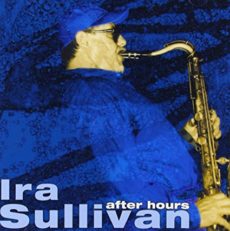
Daily Dose Of Jazz…
Ira Sullivan was born May 1, 1931 in Washington, D.C. and was taught trumpet by his father, saxophone by his mother and played both in the 1950s Chicago, Illinois with Charlie Parker, Lester Young, Wardell Gray and Roy Eldridge, garnering a reputation as a fearsome bebop soloist. After playing briefly with Art Blakey in 1956, he mastered alto and baritone saxophone before moving south to Florida and out of the spotlight in the early Sixties.
Sullivan was reluctant to travel which limited his opportunities to play with musicians of the first rank, but he continued to play in the Miami area, often in schools and churches. Hanging out with local younger players Jaco Pastorius and Pat Metheny, led to teaching and to broadening of his own musical roots to include the lessons of John Coltrane’s music and elements of jazz rock.
Adding flute and soprano saxophone to his armoury, Ira moved to New York City and in 1980 formed a quintet with legendary bop trumpeter Red Rodney where they worked on new material and fostered young talent to produce some fresh and stimulating music. He and his longtime friend and collaborator jazz pianist and vibraphonist Stu Katz, co-led a multi-night performance with at Joe Segal’s Jazz Showcase in Chicago.
Ira has performed and/or recorded with Red Rodney, Erin McDougald, Rob Block, Art Blakey, Frank Catalano, Kelly Sill, Charles Heath, Eddie Harris, Roland Kirk, Marc Berner, Lin Halliday, J. R. Monterose, Rita Reys and Billy Taylor and numerous others.
Trumpeter, flugelhornist, flautist, saxophonist, and composer Ira Sullivan has recorded as a leader and taught at the Young Musicians Camp each summer at the University of Miami passed away on September 21, 2020, of metastatic pancreatic cancer in his Miami, Florida home at age 89
Sponsored By

Voices From The Community
![]()
#preserving genius
More Posts: bandleader,flugelhorn,flute,history,instrumental,jazz,music,saxophone,trumpet
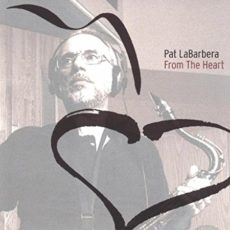
Daily Dose Of Jazz…
Pat LaBarbera was born Pascel Emmanuel LaBarbera on April 7, 1944 in Mt. Morris, New York. He began as a soloist in Buddy Rich bands from 1967–1973 and went on to work with Elvin Jones in 1975 and touring Europe with him in 1979. While working with Rich, he was also working in groups led by Woody Herman and Louie Bellson, as well as playing with Carlos Santana.
He moved to Toronto, Ontario in 1974 and is a on the faculty at Humber College. LaBarbera has played a major role in the development of a generation of Canadian saxophonists. He has released a handful of albums as a leader since 1975 and another two-dozen as a sideman. In 2000, he won a Juno Award for Best Traditional Instrumental Jazz Album for Deep in a Dream.
He is the brother of trumpeter John LaBarbera with who he is a part of his big band, and drummer Joe LaBarbera and worked with the Dave McMurdo Jazz Orchestra, Denny Christianson, Jan Jarczyk. Tenor, alto and soprano saxophonist, clarinetist, and flautist Pat LaBarbera continues to teach, perform and record.
#preserving genius
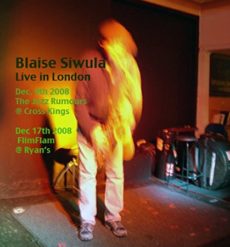
Daily Dose Of Jazz…
Blaise Siwula was born in Detroit, Michigan, on February 19, 1950 and grew up in a working/middle-class Black neighborhood. His next-door neighbor practiced saxophone in the afternoon and occasionally allowed him inside to watch him play. He began studying the alto saxophone at the age of 14, playing in the middle-school concert band. But, upon hearing John Coltrane’s Om in 1969, he was compelled to take the tenor saxophone and make it his voice.
He attended college on and off for an extended period from 1968-1980, studying theory and composition at Wayne State University and earning his B.F.A. degree. Siwula’s first personal encounters with jazz musicians came around 1971 with drummer Doc Watson, while both were living in a hotel near the downtown campus of Wayne State. Then the saxophonist got married, moved to San Francisco, California and started playing free improvised music in coffee houses and writing poetry.
Influenced by hearing Art Pepper in San Francisco, as well as Ornette Coleman, Sonny Stitt, Archie Shepp, Pharoah Sanders, Sun Ra, Blue Mitchell, Elvin Jones, and Miles Davis in memorable live performances around the Detroit area in the early ‘1970s. After spending four years in Northern California, Blaise moved back to Detroit, then headed for Europe in 1989, working and traveling as a street musician for three months, then returning to the States and settling in New York City.
Active on the metro New York improvisation scene, he worked with Amica Bunker, the Improvisers Collective, and the Citizens Ontological Music Agenda (COMA) series. During the decade of the 2000s, he concentrated his efforts as a spontaneous composer incorporating traditional musical scoring techniques with visual/graphic and performance-oriented presentations.
Over the course of his career he has played or collaborated with Doug Walker’s Alien Planetscapes, Cecil Taylor’s Ptonagas, William Hooker’s ensembles, Judy Dunaway’s Balloon Trio, Dialing Privileges with Dom Minasi and John Bollinger, Karen Borca, William Parker, Jeff Platz, Adam Lane, Wilber Morris, Vincent Chancey, Theo Jörgensmann, Rashid Bakr, Tatsuya Nakatani,, Jay Rosen, Sarah Weaver, Fala Mariam, Ernesto Rodrigues, Hilliard Greene, Joe McPhee, Ernesto Diaz-Infante, Maria De Alvear, Vattel Cherry, and Jeff Arnal, among others.
Avant-garde alto saxophonist Blaise Siwula also plays the clarinets, flutes, percussion and string instruments and continues to perform and record free jazz and curate.
Sponsored By
www.whatissuitetabu.com
![]()
#preserving genius
More Posts: clarinet,flute,percussion,saxophone,strings
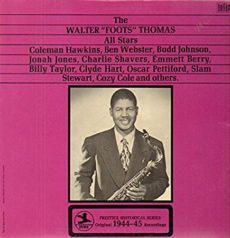
Daily Dose Of Jazz…
Walter Purl “Foots” Thomas was born on February 10, 1907 in Muskogee, Oklahoma, elder brother tos alto saxophonist and songwriter Joe Thomas. Moving to St. Louis, Missouri he played in Ed Allen’s Whispering Band of Gold in the early 1920s and in 1924 recorded with Fate Marable’s Society Orchestra.
1927 saw Foots, as he was affectionately known, in New York City, where he played with the New Orleans pianist and composer Jelly Roll Morton and Joe Steele. He then joined The Missourians in 1929, just before Cab Calloway took the band over. Among his arrangements was the 1931 hit song, Minnie the Moocher.
Leaving Calloway’s orchestra in 1943 he went to work with saxophonist and composer Don Redman. He went on to lead a 1944 recording session with sidemen including Coleman Hawkins, Hilton Jefferson, Eddie Barefield and Jonah Jones, as well as another session that year featuring Ben Webster, Budd Johnson, and Emmett Berry.
During the mid-1940s he taught at a studio on West 48th Street in New York City and among his students was the hard bop alto saxophonist Jackie McLean. In the 1950s he became a manager and booking agent; he worked for the Shaw Artists Corporation and for a time one of his clients was the trumpeter Dizzy Gillespie.
Tenor saxophonist, flautist and arranger Foots Thomas, who played in one of the most famous orchestras of the Swing era, passed away from cancer on August 26, 1981. He was posthumously inducted into the Oklahoma Jazz Hall of Fame in 1996.
#preserving genius



